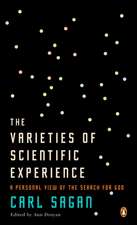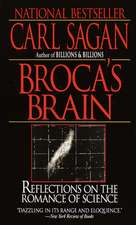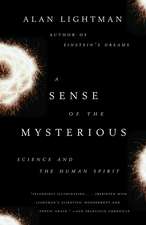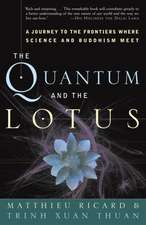The Beginnings of Piezoelectricity: A Study in Mundane Physics: Boston Studies in the Philosophy and History of Science, cartea 246
Autor Shaul Katziren Limba Engleză Paperback – 22 noi 2010
Employing exceedingly rich material Katzir gains interesting insights into the nature of scientific development from this history. Among the themes raised here are: the sources of a discovery, the interplay between molecular-atomistic and phenomenological approaches and between scientific practice and protagonists’ philosophy of science, the role of thermodynamic formulation, the interaction of different levels of theories with experiment, the use and design of qualitative versus precise quantitative experiments, the employment of symmetry in physics and the role of national and local experimental and theoretical traditions. Observations regarding these and other issues in this book portray an unexpected picture of turn of the century physics.
| Toate formatele și edițiile | Preț | Express |
|---|---|---|
| Paperback (1) | 640.06 lei 6-8 săpt. | |
| SPRINGER NETHERLANDS – 22 noi 2010 | 640.06 lei 6-8 săpt. | |
| Hardback (1) | 649.71 lei 6-8 săpt. | |
| SPRINGER NETHERLANDS – 6 noi 2006 | 649.71 lei 6-8 săpt. |
Din seria Boston Studies in the Philosophy and History of Science
- 18%
 Preț: 944.19 lei
Preț: 944.19 lei - 15%
 Preț: 646.75 lei
Preț: 646.75 lei - 15%
 Preț: 646.75 lei
Preț: 646.75 lei - 15%
 Preț: 699.28 lei
Preț: 699.28 lei - 18%
 Preț: 736.50 lei
Preț: 736.50 lei -
 Preț: 500.02 lei
Preț: 500.02 lei - 15%
 Preț: 643.16 lei
Preț: 643.16 lei - 15%
 Preț: 650.69 lei
Preț: 650.69 lei - 15%
 Preț: 634.18 lei
Preț: 634.18 lei - 15%
 Preț: 642.68 lei
Preț: 642.68 lei -
 Preț: 391.40 lei
Preț: 391.40 lei -
 Preț: 383.33 lei
Preț: 383.33 lei - 18%
 Preț: 944.19 lei
Preț: 944.19 lei - 18%
 Preț: 955.56 lei
Preț: 955.56 lei - 15%
 Preț: 643.65 lei
Preț: 643.65 lei -
 Preț: 392.75 lei
Preț: 392.75 lei - 18%
 Preț: 1229.10 lei
Preț: 1229.10 lei - 18%
 Preț: 1238.23 lei
Preț: 1238.23 lei - 18%
 Preț: 951.29 lei
Preț: 951.29 lei - 18%
 Preț: 1223.25 lei
Preț: 1223.25 lei - 18%
 Preț: 1225.79 lei
Preț: 1225.79 lei - 18%
 Preț: 1226.42 lei
Preț: 1226.42 lei - 18%
 Preț: 1236.82 lei
Preț: 1236.82 lei - 15%
 Preț: 644.49 lei
Preț: 644.49 lei - 18%
 Preț: 1231.78 lei
Preț: 1231.78 lei - 15%
 Preț: 644.30 lei
Preț: 644.30 lei - 18%
 Preț: 957.62 lei
Preț: 957.62 lei - 18%
 Preț: 1222.49 lei
Preț: 1222.49 lei - 18%
 Preț: 947.50 lei
Preț: 947.50 lei - 18%
 Preț: 1833.95 lei
Preț: 1833.95 lei - 18%
 Preț: 1227.99 lei
Preț: 1227.99 lei - 18%
 Preț: 947.35 lei
Preț: 947.35 lei
Preț: 640.06 lei
Preț vechi: 753.01 lei
-15% Nou
Puncte Express: 960
Preț estimativ în valută:
122.48€ • 130.97$ • 102.12£
122.48€ • 130.97$ • 102.12£
Carte tipărită la comandă
Livrare economică 18 aprilie-02 mai
Preluare comenzi: 021 569.72.76
Specificații
ISBN-13: 9789048171675
ISBN-10: 9048171679
Pagini: 288
Ilustrații: XIV, 273 p.
Dimensiuni: 160 x 240 x 15 mm
Greutate: 0.41 kg
Ediția:Softcover reprint of hardcover 1st ed. 2006
Editura: SPRINGER NETHERLANDS
Colecția Springer
Seria Boston Studies in the Philosophy and History of Science
Locul publicării:Dordrecht, Netherlands
ISBN-10: 9048171679
Pagini: 288
Ilustrații: XIV, 273 p.
Dimensiuni: 160 x 240 x 15 mm
Greutate: 0.41 kg
Ediția:Softcover reprint of hardcover 1st ed. 2006
Editura: SPRINGER NETHERLANDS
Colecția Springer
Seria Boston Studies in the Philosophy and History of Science
Locul publicării:Dordrecht, Netherlands
Public țintă
ResearchCuprins
Introduction.
1: The discovery of the piezoelectric effect.
2: The Road to the Descriptive Theory
3: Theories and models about the causes of the piezoelectric phenomena.
4: Theoretical elaboration of Voigt’s theory.
5: Empirical work in the 1890s
Concluding Remarks
Appendix. 1. Earlier appearances of electricity by pressure.
Appendix 2. Mathematical Works on Voigt's General Theory
Appendix 3. Voigt's Concepts of Electric Charge
Appendix 4. Tables
Bilbliography
Index
1: The discovery of the piezoelectric effect.
2: The Road to the Descriptive Theory
3: Theories and models about the causes of the piezoelectric phenomena.
4: Theoretical elaboration of Voigt’s theory.
5: Empirical work in the 1890s
Concluding Remarks
Appendix. 1. Earlier appearances of electricity by pressure.
Appendix 2. Mathematical Works on Voigt's General Theory
Appendix 3. Voigt's Concepts of Electric Charge
Appendix 4. Tables
Bilbliography
Index
Recenzii
From the reviews:
“The subject is the study of piezoelectricity—the production of electric charge by mechanical pressure and its converse effect on certain crystals—from 1880 to 1900. … In addition to illustrating the pretheoretical/theoretical division, Katzir makes it clear that the beginning of piezoelectricity can serve as a window on certain broad themes of nineteenth-century physics at the level of practice. … it does make readers wonder what broad lesson can be learned from it.” (Chen-Pang Yeang, ISIS, Vol. 102 (1), March, 2011)
"Even though Shaul Katzir’s The Beginnings of Piezoelectricity: A Study in Mundane Physics is published as part of the Boston studies in the Philosophy of Science series, it will also interest applied scientists and engineers working on modern aspects of piezoelectricity and electromechanical transduction in materials. … is a useful and thought-provoking study of an often-neglected but exciting seminal field of material physics." (Reimund Gerhard, Physics Today, December 2007)
“The subject is the study of piezoelectricity—the production of electric charge by mechanical pressure and its converse effect on certain crystals—from 1880 to 1900. … In addition to illustrating the pretheoretical/theoretical division, Katzir makes it clear that the beginning of piezoelectricity can serve as a window on certain broad themes of nineteenth-century physics at the level of practice. … it does make readers wonder what broad lesson can be learned from it.” (Chen-Pang Yeang, ISIS, Vol. 102 (1), March, 2011)
"Even though Shaul Katzir’s The Beginnings of Piezoelectricity: A Study in Mundane Physics is published as part of the Boston studies in the Philosophy of Science series, it will also interest applied scientists and engineers working on modern aspects of piezoelectricity and electromechanical transduction in materials. … is a useful and thought-provoking study of an often-neglected but exciting seminal field of material physics." (Reimund Gerhard, Physics Today, December 2007)
Notă biografică
Shaul Katzir is a historian of science. He teaches history of science [and general history] at Bar Ilan, Ben Gurion, and Tel Aviv universities, at the Hebrew university of Jerusalem and at the Academic College of Tel Aviv Jaffa.
Textul de pe ultima copertă
Involving electricity, elasticity, thermodynamics and crystallography, several scientific traditions and approaches and leading physicists, the history of piezoelectricity provides an advantageous perspective on late nineteenth century physics and its development. The beginnings of piezoelectricity, the first history of the subject, exhaustively examines how these diverse influences led to the discovery of the phenomenon in 1880, and how they shaped its subsequent research until the consolidation of an empirical and theoretical knowledge of the field circa 1895. It studies a particular subdiscipline representative of many similar ‘mundane’ branches of physics that did not bear revolutionary consequences beyond their field. Although most research is of this kind, such branches have rarely been studied by historians of science. Shaul Katzir’s historical account shows that this mundane science was an intriguing intellectual and practical enterprise, which involved, among other things,originality, surprises and controversies. Thereby, it displays the fruitfulness of studying such a field.
Employing exceedingly rich material Katzir gains interesting insights into the nature of scientific development from this history. Among the themes raised here are: the sources of a discovery, the interplay between molecular-atomistic and phenomenological approaches and between scientific practice and protagonists’ philosophy of science, the role of thermodynamic formulation, the interaction of different levels of theories with experiment, the use and design of qualitative versus precise quantitative experiments, the employment of symmetry in physics and the role of national and local experimental and theoretical traditions. Observations regarding these and other issues in this book portray an unexpected picture of turn of the century physics.
Employing exceedingly rich material Katzir gains interesting insights into the nature of scientific development from this history. Among the themes raised here are: the sources of a discovery, the interplay between molecular-atomistic and phenomenological approaches and between scientific practice and protagonists’ philosophy of science, the role of thermodynamic formulation, the interaction of different levels of theories with experiment, the use and design of qualitative versus precise quantitative experiments, the employment of symmetry in physics and the role of national and local experimental and theoretical traditions. Observations regarding these and other issues in this book portray an unexpected picture of turn of the century physics.
Caracteristici
Includes supplementary material: sn.pub/extras


















